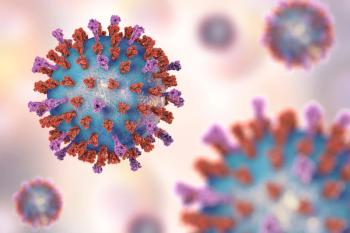
Impact of Pharmacist-Led Diabetes Management
A community-based multidisciplinary team can have a significant impact addressing health disparities and diabetes management.
More than 11% of American adults have diabetes, with an estimated annual total of $327 billion spent on medical costs and loss of work productivity related to the disease.1
Diabetes disproportionately affects people of lower socioeconomic status and those who identify as racial minorities. Type 2 diabetes mellitus (T2DM) can lead to further complications, including heart disease, chronic kidney disease, high blood pressure, nerve damage, and glaucoma.2
In January 2023, Health Promotion Practice published a study that examined the impact of a pharmacist-led approach to diabetes management in a free-standing charitable pharmacy. The pharmacists provided medication therapy management (MTM) and improved communication between the pharmacist and primary care providers (PCPs).
The researchers found that a community-academic partnership can help under-resourced patients manage their diabetes and stabilize their blood glucose levels. Diabetes control is often assessed through hemoglobin A1C (HbA1C), an average of blood glucose levels over 2-3 months. HbA1C levels require a blood draw and are relatively expensive.
Alternatively, although less reliable, blood glucose levels can be obtained using a fingerstick and take less than 1 minute. Given the patient population, researchers believed that blood glucose levels using a fingerstick were more realistic monitoring devices for an under-resourced population accessing a free-standing pharmacy.
This study cultivated the development of a community-academic partnership. The collaboration included a free-standing charitable pharmacy, PCPs at a federally qualified health center (FQHC), pharmacy students, health researchers, and other community members. The study findings show the impact of a community-based multidisciplinary team on addressing health disparities and managing diabetes.
Researchers found that pharmacist-led MTM helped these patients manage their blood glucose more effectively. This was seen through relative stabilization of random blood glucose levels throughout the study.
Throughout the course of this study, 8 participants arrived at the pharmacy with dangerously high blood glucose levels exceeding 350. This indicates that routine blood glucose checks at pharmacy pick-up could have lifesaving results and reduce the need for costly emergency department visits.
The study results revealed communication gaps between PCPs and pharmacists who served the same patients. However, sharing the results of the study with the FQHC prompted changes in workflow and standard operating procedures at both the pharmacy and FQHC. PCP-specific communication (phone call, fax, text) was established for the pharmacist and staff.
Conclusion
Pharmacist-led blood glucose management in under-resourced patients with T2DM led to stabilization of blood glucose levels. A community-academic partnership can help patients manage their chronic diseases, improve overall health, and avoid health crises.
About the Author
Kirsten Werner is a 2023 PharmD candidate at the University of Connecticut.
References
- Statistics about diabetes. Statistics About Diabetes | ADA. https://diabetes.org/about-us/statistics/about-diabetes. Accessed January 19, 2023.
- Prevent diabetes complications. Centers for Disease Control and Prevention. https://www.cdc.gov/diabetes/managing/problems.html#:~:text=Common%20diabetes%20health%20complications%20include,how%20to%20improve%20overall%20health. Published November 3, 2022. Accessed January 20, 2023.
- Charitable pharmacies as catalysts for coordinated care: Pharmacist management of blood glucose among under-resourced patients with type 2 diabetes. Health Promotion Practice. 2023:152483992211150. doi:10.1177/15248399221115082
Newsletter
Stay informed on drug updates, treatment guidelines, and pharmacy practice trends—subscribe to Pharmacy Times for weekly clinical insights.




